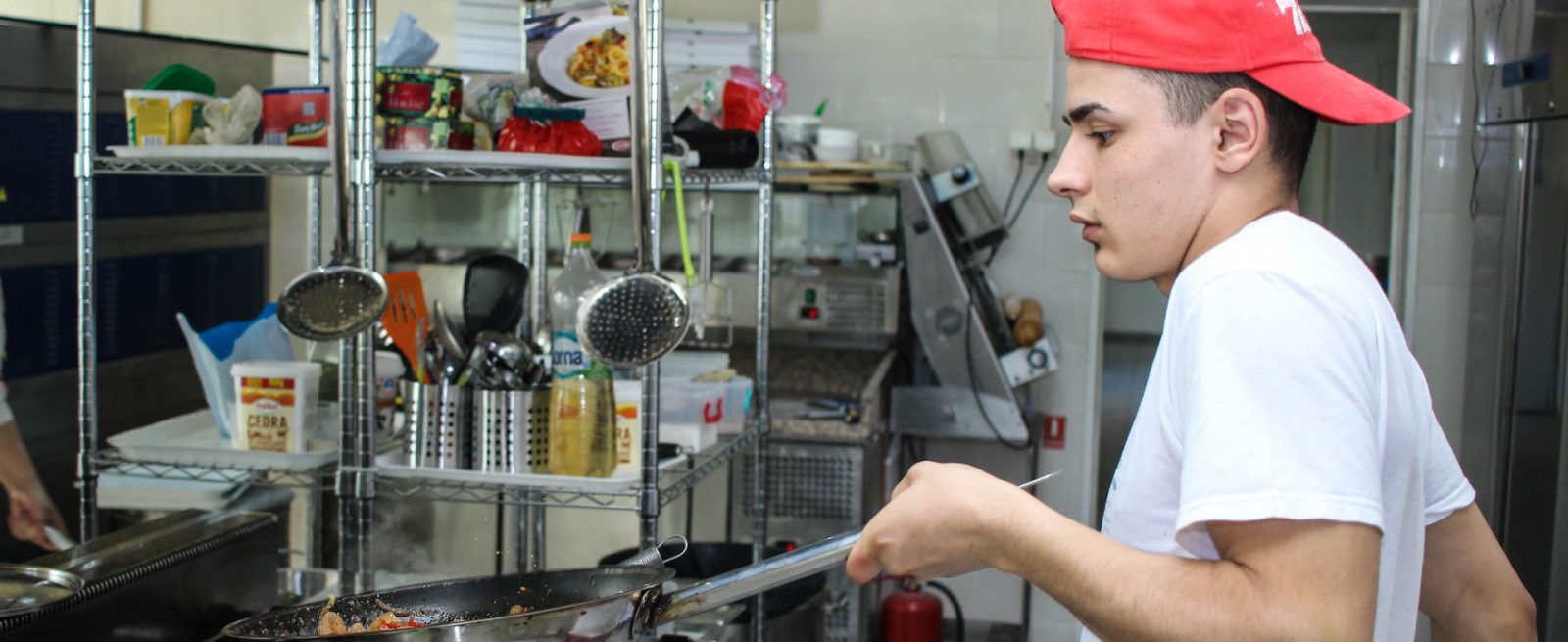How Floor Mats Can Improve Workplace Safety in Restaurants
4 Min Read By Phil Lorcher
Restaurants are an active place, with employees hustling about to make sure everything gets done and customers leave happy. Of course, all that activity can make restaurants a dangerous place if people aren’t careful. According to the Bureau of Labor Statistics (BLS), there were more than 50,000 reported injuries in the restaurant industry. Many of these incidents involve something that’s in every restaurant: the floor. Between slippery surfaces, long shifts, and tight workspaces, restaurant floors can create big problems that put workers at risk for both harmful accidents and ongoing ailments related to their job. To prevent these problems, we must first identify what they are and then come up with appropriate solutions.
Slippery Floors
A wet floor can be one of the biggest hazards in a kitchen. A single slip can lead to serious injuries, especially if someone is coming around a corner carrying something sharp, hot, or heavy. According to BLS data, there were nearly 15,000 reported nonfatal slip, trip, and fall injuries in the restaurant industry in 2016. The impacts of these injuries varied, with a median of six days away from work. It doesn’t take much for a kitchen floor to get slippery. Anything from natural condensation from heat to accidental spills can turn a regular surface into a slippery mess. Even attempts to clean the floor can leave a sleek solution of water and film, and that’s when someone gets time to even try and clean up a mess in a busy kitchen.
Slip prevention is also beneficial for more than just the back of the house. Customers can track rain and snow throughout a restaurant and create slippery hazards for workers and patrons alike. While you can’t help what your customers bring in, you can lay down entrance mats that absorb rain and snow when people walk through the door to keep floors clean and dry and protect both customers and service staff.
Drainage mats are also a great solution for the kitchen as well. Drainage mats are made with a special tread on a slip-resistant material like rubber or vinyl that provides workers with more traction than the typical kitchen floor. If there’s a spill, wet area floor mats are designed to allow water and other slippery foods drain through to the floor instead of pooling up on the surface. When it comes time to clean a mess, all you do is pick up a mat, wipe it down, and wash away what’s left.
In addition to safety mats, good footwear can help workers navigate tight spaces without worrying if the tread on their shoes will fail them. Another key safety tip is to make sure people in the kitchen always communicate. By using key callouts like “behind” and “corner,” employees can limit accidental collisions that can lead to slippery floors and serious injuries.
Long Periods of Standing on Hard Surfaces
Slips and falls aren’t the only health issues that can be caused by restaurant floors. Whether they’re working in the back of the house or serving customers, restaurant employees can spend hours standing or hustling around an establishment. The risks of rushing around corners or through tight work areas can seem obvious enough, but people don’t always consider how standing in one place can slowly take its toll on their body. While walking allows your legs to alternate supporting your body, standing forces each leg to hold up half your body weight at all times. Instead, your feet and calves are constantly adjusting to hold you upright, leading to excess stress on those parts of the body that can extend to issues elsewhere. OSHA cites standing for long periods of time on a hard surface as one of its ergonomic hazards for restaurant workers, noting that it “can lead to muscle fatigue, back pain, and soreness in legs and feet.” Without proper support or breaks, the constant pressure of a hard surface on a person’s body can lead to fatigue and chronic health issues. The first option is to keep everyone moving and to allow for regular breaks where people can get off their feet.
Unfortunately, the rigors of restaurant life can create situations where long periods of standing are necessary. To combat the impacts of standing on a hard surface, it makes sense to add some additional support. Once again, proper footwear that isn’t worn down can give your feet a lift, while anti-fatigue floor mats can provide people with enough cushion to take some of the stress of their bodies while they work. A layer of spongy material can make a huge difference for reducing fatigue and keeping workers refreshed as they stand at their stations.
Tripping Hazards
Items that are on the floor can be as much of a problem as the floor itself. As with slips, trips contribute to roughly 15,000 injuries in the restaurant business. Tripping hazards can come in all sort of forms in both the front and back of the house, so prevention is all about identifying and removing those threats from floors. The first threat is anything being stored on the floor or falling to the floor from a counter or busing container. Keep these areas clear at all times to prevent people from tripping over them. Another hazard is any flooring that is loose or sticks out enough to cause someone to catch their feet on them. Make sure that mats have beveled edges so that they lay flat to the ground and that carpeting isn’t sticking up to where customers can trip over it.
When it comes to improving workplace safety, sometimes the best place to start is from the ground up. Making a restaurant a safer place requires ongoing effort, but with the right training and tools, you can limit the risks of injury and chronic health issues.


